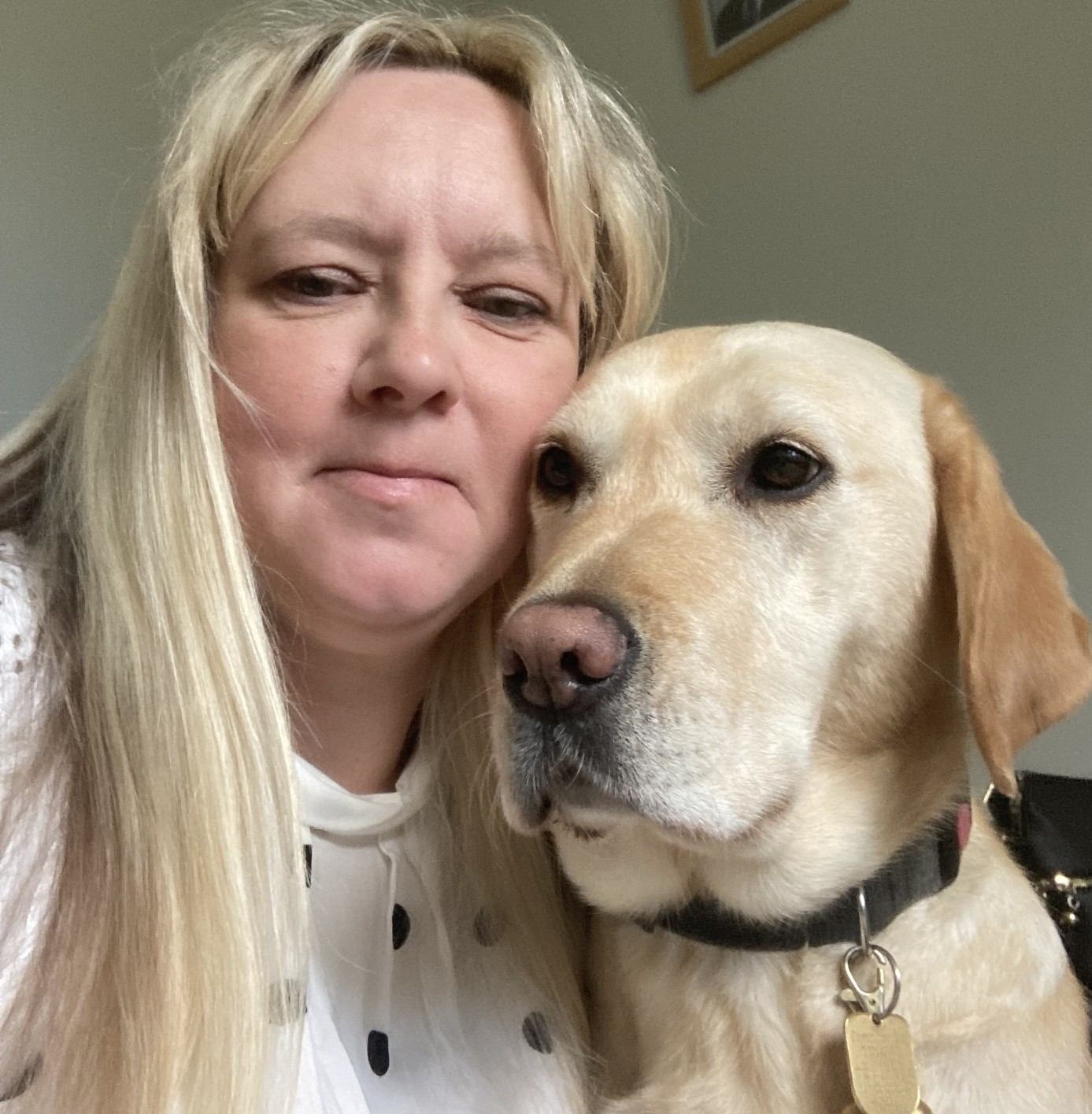Navigating a Sighted World as a Guide Dog User: The Impact of Persistent Access Issues
Welcome to my blog post where I share my personal experiences as a guide dog owner, discuss the challenges I’ve faced in accessing various services and shed light on the impact of guide dog access issues.
My name is Sam, and I am a single mother, a dedicated worker and an enthusiastic volunteer. I was diagnosed with retinitis pigmentosa in 2003, registered as blind in 2011 and became a guide dog owner in 2013. I was first matched with Tango, a black Labrador retriever cross in 2013, and we worked together until 2019. My second guide dog, Annie, a yellow Labrador cross joined me in 2019 and our partnership has allowed me to maintain an active lifestyle despite my visual impairment. Although I am capable of using a cane and going out independently, having a guide dog by my side enables me to live life at a faster pace, granting me the freedom and confidence I desire.
Despite the implementation of the Disability Discrimination Act in 1995 and the Equality Act in 2010, I continue to encounter barriers that impede my access to services regularly. Many businesses and service providers still do not adequately train their staff in disability awareness, which has led to ongoing discrimination and misunderstandings surrounding the rights of guide dog users. For nearly 12 years, I have experienced numerous instances of refusal of service, or have had to advocate for myself in various situations, such as when using taxis, shopping at convenience stores, dining at restaurants or fast food chains, visiting public houses or accessing NHS services. Although these challenges do not occur daily, they are frequent enough to disrupt my life and leave a lasting, negative impression of certain industries. Each instance of discrimination necessitates a time-consuming process of advocacy and, often, formal complaints. As a result, I am left feeling apprehensive about exploring new businesses, fearing further encounters with such unjust treatment.
Living with retinitis pigmentosa, I have a minimal percentage of vision remaining, and primarily rely on detecting shapes and movements. The compounded difficulty of navigating a sighted world is challenging enough without having to combat constant barriers to my mobility and independence. I encourage businesses and service providers to prioritize inclusive practices and educate their staff on the rights of guide dog users. Together, we can work towards building a society that upholds the principles of the Disability Discrimination Act and the Equality Act, promoting an environment that is accessible and welcoming to all.
Thank you for joining me today and taking the time to understand the challenges faced by guide dog users in a world where access issues persist.
